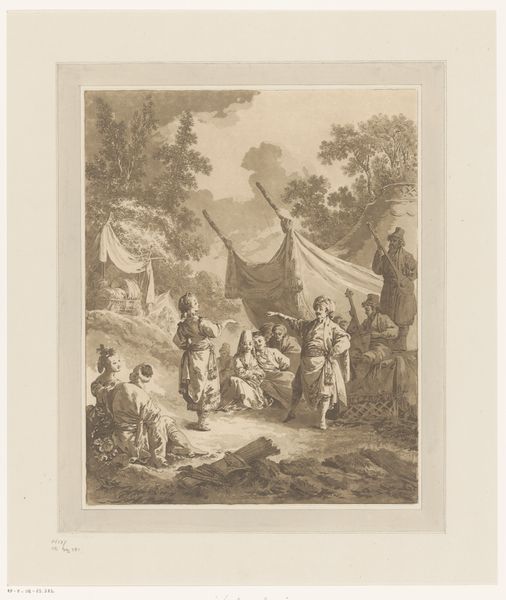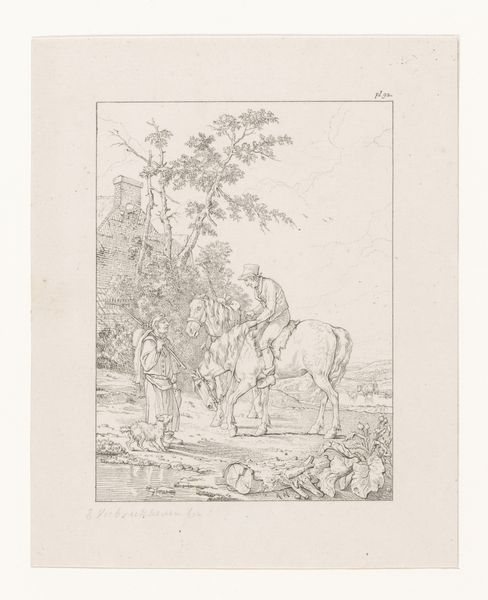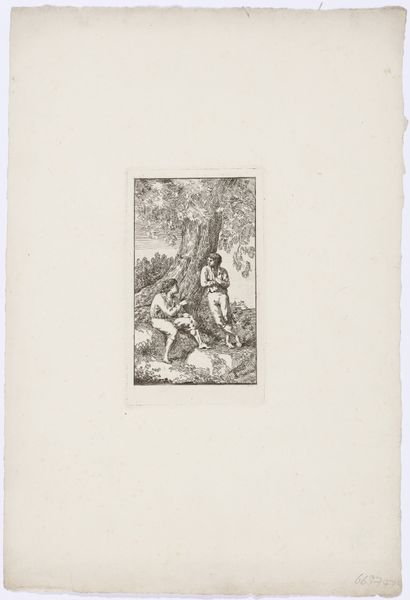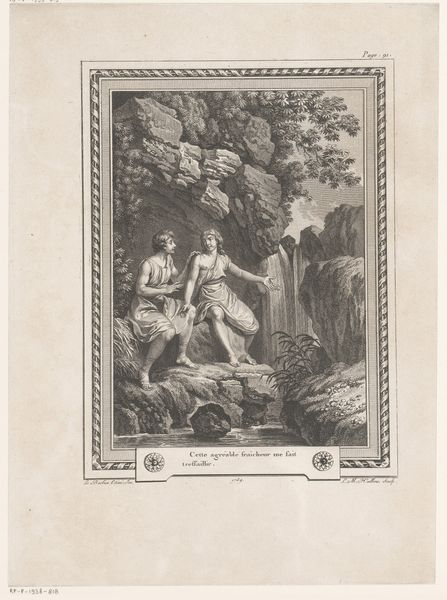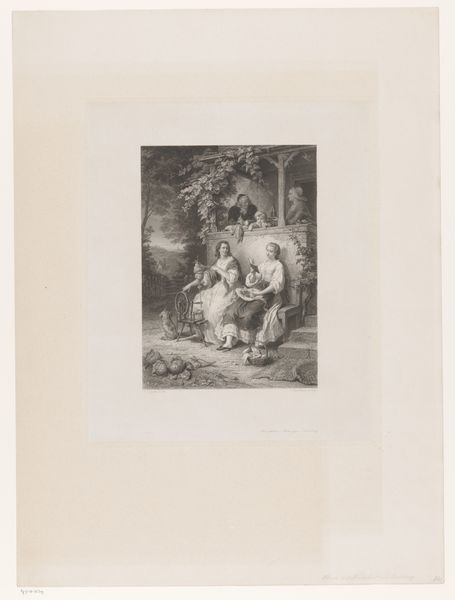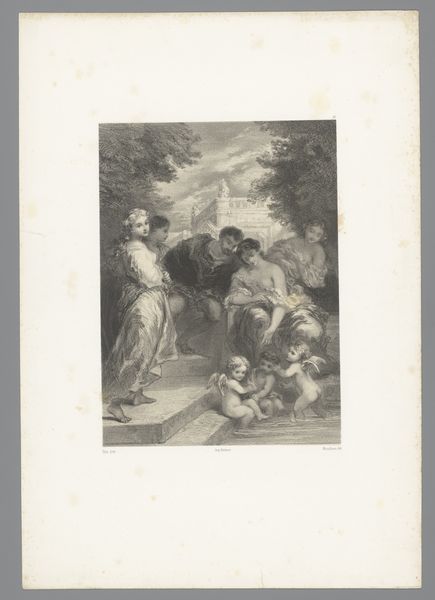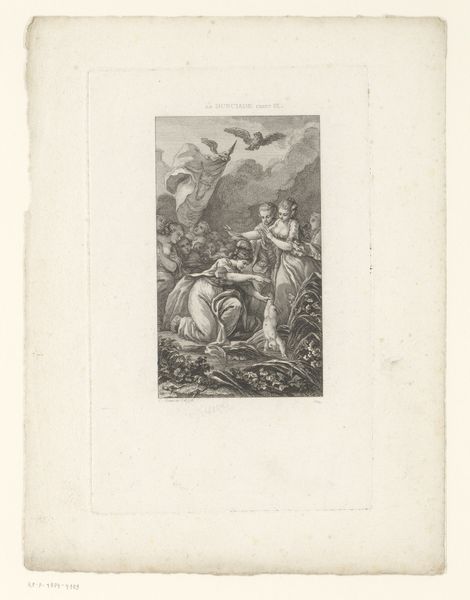
print, engraving
#
portrait
# print
#
group-portraits
#
genre-painting
#
engraving
Dimensions: height 222 mm, width 177 mm
Copyright: Rijks Museum: Open Domain
Editor: Here we have “Salvator Rosa portretteert twee muzikanten terwijl omstanders toekijken,” or “Salvator Rosa Portraits Two Musicians While Bystanders Watch”, a print from somewhere between 1839 and 1856, attributed to L. Linsen. The engraving captures a scene of musicians and onlookers in a rocky, wooded area. It has such a performative feeling about it. What do you see in this piece, especially given its context? Curator: This print offers a fascinating glimpse into how 19th-century artists interpreted and circulated ideas about artistic identity and social structures. Consider the original artist, Salvator Rosa, known for his unconventional lifestyle and preference for "low-life" subjects. Recontextualizing his subjects as 'genre painting', the piece raises several questions: Who is empowered and who is merely an observer? And further, how did social inequalities play out through music, representation, and spectatorship in 19th century Europe? Editor: I see what you mean, it seems like the artist Linsen is not just reproducing Rosa’s work but also making a statement through the act of choosing this scene and these characters. Do you think the medium of print influences our interpretation at all? Curator: Absolutely. Printmaking democratized art, making it accessible to a wider audience, including those who were socially marginalized. By depicting musicians among "bystanders", this work almost gives agency to those who were generally excluded from artistic circles. This suggests that, rather than a portrait, this work questions the nature of inclusion. The act of observation becomes a key component in the social message. Editor: That's interesting. It really highlights how art can serve as a powerful vehicle for challenging dominant ideologies. I didn't initially read so much into the crowd and their place in the piece, but seeing it as an activist lens adds new depth! Curator: Exactly, and hopefully gives us all new perspectives, questioning established social conventions along the way. It highlights how the power to represent can become a political act.
Comments
No comments
Be the first to comment and join the conversation on the ultimate creative platform.


